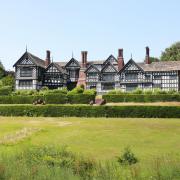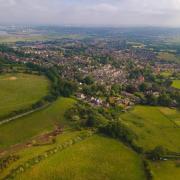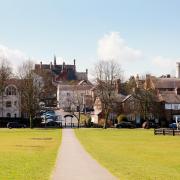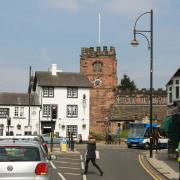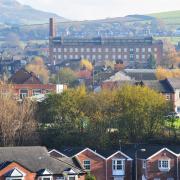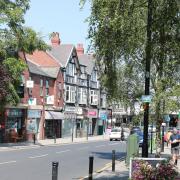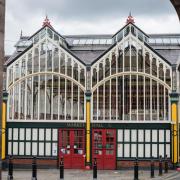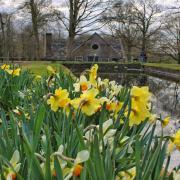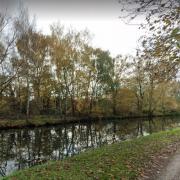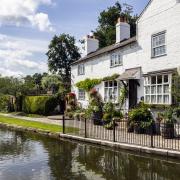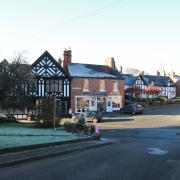To mark the centenary of the start of World War I, Dunham Massey has been transformed back into the Stamford Military Hospital it once was

It was an era when the ructions of war in Europe caused seismic shifts even in the world of the English landed gentry.

At the behest of Penelope, Lady Stamford, Dunham Massey Hall near Altrincham became, in 1917, an auxiliary hospital - a place of refuge and recuperation for the casualties of trench warfare in France. The grand furniture of the Saloon was put into storage and replaced with hospital beds. The stone floor at the foot of the grand staircase was designated an operating theatre. The Great Hall became an implausibly grand recreation room, with sing-songs around the piano, and the sounds of a wind-up gramophone echoing from the high ceilings.
The 281 patients who passed through Stamford Military Hospital in the course of almost two years were not officers but rank and file soldiers who found themselves guests in a stately home, perhaps with a titled lady changing their dressings.
‘Coming straight from the front line, some with horrendous wounds, to wake up somewhere like this must have felt like another world,’ says Lucy More, house steward at Dunham Massey Hall.
‘Some of these men would never have seen a house like this, and might never again. To come and live here, and be looked after by a countess and a lady must have left them very bemused. They would have had this sanctuary and then be sent back to the front. That must have been heart-rending.’
This remarkable slice of history is brought to life when Dunham Massey reopens on March 1. Hospital beds - including one of the original beds used in 1917 - are back in the Saloon. The lives of the soldiers, their injuries and ailments, and told in displays. Visitors will discover how operations - even brain surgery - took place by the grand staircase.
‘It’s a huge event for us and it’s something that’s not ever necessarily been done before, to transform a house for two years and then put it all back,’ says Lucy.
Katie Taylor, Dunham’s house and collections manager, says: ‘By far the largest job was to remove nearly all the furniture and collections from the Saloon. We moved other pieces of furniture– such as the grand piano - from its location upstairs in the Great Gallery down into the Great Hall which was the soldiers’ recreation room. We know the soldiers played and sang songs at a piano, so it’s quite an emotive piece of furniture.’
All of which helps to tell the stories of men suffering everything from trenchfoot to shell shock, for whom Dunham represented an idyllic hiatus. But it is also the story of three women: Lady Stamford, her daughter Lady Jane Grey, a volunteer nurse, and the matron Sister Catherine Bennett, who came to Dunham from Exmouth, Devon.
Lady Stamford was 53 in 1917, widowed seven years previously, and in charge of the estate until her son Roger turned 21 in October of that year. It was Roger who, leaving no heir, bequeathed Dunham to the National Trust on his death in 1976. Because he never married, the family title died with him.
‘Lady Stamford was quite a formidable character. She was a Victorian, and you can imagine this slightly imposing persona, and yet the softer side of her when she offered up Dunham for the soldiers,’ says Lucy. ‘She really did take a deep interest in the welfare of the soldiers.’
Lady Jane Grey had been at Heathfield School, Ascot, but was so keen to do her bit that she left at 16, trained at Haigh Lawn hospital, Bowdon, and came home to work in Stamford Military Hospital - one of 3,244 auxiliary hospitals set up to relieve the strain on field hospitals. It is from the memories of Lady Jane, who died in 1991, that those recreating the hospital were able to draw.
‘In the 1980s, when the Trust took over, they tried to record as much of the history as possible,’ says Lucy. ‘Lady Jane was quite old then. They got a recording of her walking through the house talking about the different rooms and what went on there. We have this recording of her talking about the operating theatre, how she held a torch over a man’s head and saw his grey matter. She wasn’t at all squeamish.’
Diaries, letters, Sister Bennett’s photo album and items from the period have also been drawn upon for the display.
For the visitors expected to flock to Dunham, this story will already have a ring of familiarity. Many will have seen Downton Abbey’s fictional portrayal of a stately home transformed into a First World War auxiliary hospital.
‘It’s lovely that people have already become aware of the things that went on in these great houses,’ says Lucy. ‘It wasn’t simply a great family who were very wealthy, who shut themselves away. They really wanted to do everything they possibly could for people and they weren’t snobbish about the people they were helping. In Downton Abbey, it’s all officers, so you get all these terribly well-spoken gentlemen. It wasn’t quite the same at Dunham.’
Dunham Massey Hall, Altrincham, open on March 1, transformed into Stamford Military Hospital, and will remain so for the 2014/15 and 2015/16 seasons. For details, see www.nationaltrust.org.uk/dunham-massey




